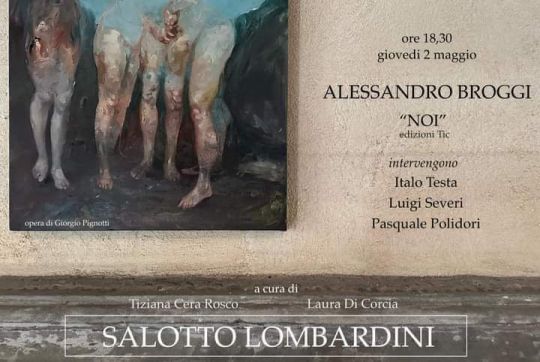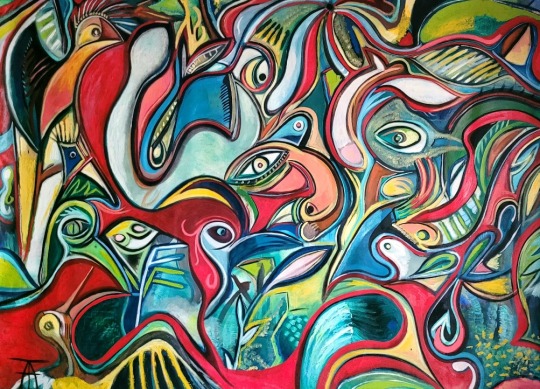#corcia
Explore tagged Tumblr posts
Text

Fendi, A/W 2001.
Ph. Philip Lorca di Corcia
57 notes
·
View notes
Text
















Chic Clicks
Exhibition curator Ulrich Lehmann
Hatje Cantz Publ. , Berlin 2002, 150+140 pages, 23,5x30cm, ISBN 3-7757-1135-X
euro 90,00
email if you want to buy [email protected]
Catalogue reads from both directions, with texts in the center of the book, with hundreds of full color photographs by a range of artists including Philip-Lorca diCorcia, Anders Edstrom, Takashi Himma, Richard Prince, Collier Schorr, Cindy Sherman, Larry Sultan, Erwin Wurm, and many others. Published on the occasion of the exhibition held first in Boston from January 23-May 5, 2002, and subsequently at Fotomuseum Winterthur from June 15-August 18, 2002.
Chic Clicks est la première publication traitant du conflit entre la revendication artistique et la réalité commerciale dans la photographie de mode. 40 photographes de renom présentent des travaux libres et inédits ainsi que des commandes publiées dans des magazines de mode ; cinq essais traitent de la photographie de mode dans sa signification culturelle et sociale.
Chic Clicks présente à la fois des clichés privés et expérimentaux de photographes qui se sont fait un nom avec des photos de mode, et des photos de mode de photographes qui se sont d'abord fait connaître par leur travail artistique et qui, par conséquent, ont reçu des commandes de magazines de mode et d'entreprises.
Les artistes : Fred Aufray, Laetitia Benat, Anuschka Blommers & Niels Schumm, Koto Bolofo, Mark Borthwick, Jean-François Carly, Alex Cayley, Banu Cennetoglu, Donald Christie, Philippe Cometti, Philip-Lorca diCorcia, Corinne Day, Horst Diekgerdes, Anders Edström, Alexei Hay, Takashi Homma, Mikael Jansson, Marcelo Krasilcic, Christophe Kutner, Tom Lingnau et Frank Schumacher, Glen Luchford, Richard Prince, Dmon Prunner, Blaise Reuterswärd, Terry Richardson, Satoshi Saikusa, Jimo Salako, Luis Sanchis, Collier Schorr, Cindy Sherman, David Sims, Antonio Spinoza, Larry Sultan, Iké Udé, Javier Vallhonrat, Jonathan de Villiers, Matthias Vriens, Erwin Wurm
10/06/24
#Chic Ckicks#photography exhibition catalogue#Boston & Winterthur 2002#Koto Bolofo#Lorca di Corcia#Cindy Sherman#Vallhonrat#Iké Udé#Richard Prince#photography books#fashionbooksmilano
49 notes
·
View notes
Text

Philip Lorca di Corcia
4 notes
·
View notes
Text
oggi, 2 maggio, a milano: "noi", di alessandro broggi @ salotto lombardini
Apre a Milano in zona Navigli un nuovo luogo dove incontrare autori, artisti, ascoltare presentazioni e parlare di libri, poetiche e opere: si tratta del Salotto Lombardini, una casa privata – ma aperta a tutti, presegnalando per mail la propria presenza – la cui stagione sarà curata da Tiziana Cera Rosco e Laura Di Corcia.L’evento inaugurale vede Italo Testa, Pasquale Polidori e Luigi Severi…

View On WordPress
#Alessandro Broggi#Italo Testa#Laura Di Corcia#lettura#Luigi Severi#Navigli#Noi#Pasquale Polidori#presentazione#reading#Salotto Lombardini#Tic Edizioni#Tiziana Cera Rosco#UltraChapBooks
0 notes
Text

2 notes
·
View notes
Text


Makayla Couture
Call Me Mother
House of Dulcet
Finale Look
Photography by Fabian Di Corcia
8 notes
·
View notes
Photo

Check out Willy Ronis, Nude Paris (1997), From Galerie Claire Corcia
0 notes
Text
TUDCA Benefits for Health

TUDCA supports liver health and detoxification.
It improves bile flow and digestion.
TUDCA has neuroprotective properties.
It aids in managing metabolic disorders.
TUDCA supports overall cellular health.
Liver Health and Detoxification
TUDCA (tauroursodeoxycholic acid) is a bile acid derivative known for its liver health benefits. It detoxifies the liver, promoting the elimination of toxic bile acids.
This protection reduces the risk of liver diseases like cirrhosis and hepatitis.
Improved Bile Flow and Digestion
TUDCA enhances bile flow, aiding the emulsification and absorption of dietary fats and fat-soluble vitamins.
Improved bile flow also helps prevent the formation of gallstones.
Neuroprotective Properties

Research indicates that TUDCA offers neuroprotective effects, benefiting brain health. It reduces cell death and inflammation in the brain, which is valuable for managing conditions like Alzheimer’s, Parkinson’s, and other neurodegenerative diseases.
Reduction in endoplasmic reticulum stress plays a significant role in its neuroprotective properties.
Managing Metabolic Disorders
TUDCA helps manage metabolic disorders, including diabetes and obesity.
It improves insulin sensitivity and reduces inflammation, critical for controlling blood sugar levels and maintaining a healthy weight. Enhanced liver function also supports overall metabolic health.
Cellular Health Support

TUDCA supports cellular health by protecting cells from apoptosis (programmed cell death) and reducing oxidative stress. This protection is crucial for maintaining healthy tissues and organs.
TUDCA’s ability to stabilize cellular membranes and improve mitochondrial function further enhances its role in promoting overall cellular health.
Conclusion
TUDCA offers a wide range of health benefits, particularly for liver health, digestion, brain protection, and managing metabolic disorders. Its ability to support cellular health makes it a valuable supplement for overall well-being.
FAQs
What is TUDCA? TUDCA (tauroursodeoxycholic acid) is a bile acid derivative known for its liver-protective properties.
How does TUDCA improve liver health? TUDCA promotes the elimination of toxic bile acids, protecting liver cells and reducing the risk of liver diseases.
Can TUDCA help with digestion? Yes, TUDCA enhances bile flow, aiding in the digestion and absorption of fats and fat-soluble vitamins.
Is TUDCA beneficial for brain health? TUDCA has neuroprotective properties, reducing cell death and inflammation in the brain, beneficial for neurodegenerative conditions.
Can TUDCA help with metabolic disorders? TUDCA improves insulin sensitivity and reduces inflammation, supporting the management of diabetes and obesity.Research
Albanese, A., Ludolph, A. C., McDermott, C. J., Corcia, P., Van Damme, P., H., L., Hardiman, O., Rinaldi, G., Vanacore, N., Dickie, B., Group, A. S., Tornese, P., Cocco, A., Giudice, M. L., Matteoli, M., Lauranzano, E., Malosio, M. L., Adriana Elia, C., Lombardo, F., . . . Obáin, N. N. (2022). Tauroursodeoxycholic acid in patients with amyotrophic lateral sclerosis: The TUDCA-ALS trial protocol. Frontiers in Neurology, 13, 1009113. https://doi.org/10.3389/fneur.2022.1009113
Berger, E., & Haller, D. (2011). Structure–function analysis of the tertiary bile acid TUDCA for the resolution of endoplasmic reticulum stress in intestinal epithelial cells. Biochemical and Biophysical Research Communications, 409(4), 610-615. https://doi.org/10.1016/j.bbrc.2011.05.043
Cabrera, D., Arab, J.P., Arrese, M. (2019). UDCA, NorUDCA, and TUDCA in Liver Diseases: A Review of Their Mechanisms of Action and Clinical Applications. In: Fiorucci, S., Distrutti, E. (eds) Bile Acids and Their Receptors. Handbook of Experimental Pharmacology, vol 256. Springer, Cham. https://doi.org/10.1007/164_2019_241
Cardoso, I., Martins, D., Ribeiro, T. et al. Synergy of combined Doxycycline/TUDCA treatment in lowering Transthyretin deposition and associated biomarkers: studies in FAP mouse models. J Transl Med 8, 74 (2010). https://doi.org/10.1186/1479-5876-8-74
Lee, Y. Y., Hong, S. H., Lee, Y. J., Chung, S. S., Jung, H. S., Park, S. G., & Park, K. S. (2010). Tauroursodeoxycholate (TUDCA), chemical chaperone, enhances function of islets by reducing ER stress. Biochemical and Biophysical Research Communications, 397(4), 735-739. https://doi.org/10.1016/j.bbrc.2010.06.022
Lu, Q., Jiang, Z., Wang, Q., Hu, H., & Zhao, G. (2021). The effect of Tauroursodeoxycholic acid (TUDCA) and gut microbiota on murine gallbladder stone formation. Annals of Hepatology, 23, 100289. https://doi.org/10.1016/j.aohep.2020.100289
Ma, H., Zeng, M., Han, Y., Yan, H., Tang, H., Sheng, J., Hu, H., Cheng, L., Xie, Q., Zhu, Y., Chen, G., Gao, Z., Xie, W., Wang, J., Wu, S., Wang, G., Miao, X., Fu, X., Duan, L., Xu, J., Wei, L., Shi, G., Chen, C., Chen, M., Ning, Q., Yao, C. and Jia, J., 2016. A multicenter, randomized, double-blind trial comparing the efficacy and safety of TUDCA and UDCA in Chinese patients with primary biliary cholangitis. Medicine, [online] 95(47), p.e5391. https://pubmed.ncbi.nlm.nih.gov/27893675/.
Mantopoulos, D., Murakami, Y., Comander, J., Thanos, A., Roh, M., Miller, J. W., & Vavvas, D. G. (2011). Tauroursodeoxycholic Acid (TUDCA) Protects Photoreceptors from Cell Death after Experimental Retinal Detachment. PLOS ONE, 6(9), e24245. https://doi.org/10.1371/journal.pone.0024245
Nunes, A.F., Amaral, J.D., Lo, A.C., Fonseca, M.B., Viana, R.J.S., Callaerts-Vegh, Z., D’Hooge, R. and Rodrigues, C.M.P., 2012. TUDCA, a Bile Acid, Attenuates Amyloid Precursor Protein Processing and Amyloid-�� Deposition in APP/PS1 Mice. Molecular Neurobiology, [online] 45(3), pp.440–454. https://doi.org/10.1007/s12035-012-8256-y.
Noailles, A., Fernández-Sánchez, L., Lax, P. et al. Microglia activation in a model of retinal degeneration and TUDCA neuroprotective effects. J Neuroinflammation 11, 186 (2014). https://doi.org/10.1186/s12974-014-0186-3
Oveson, B. C., Iwase, T., Hackett, S. F., Lee, S. Y., Usui, S., Sedlak, T. W., Snyder, S. H., Campochiaro, P. A., & Sung, J. U. (2011). Constituents of bile, bilirubin and TUDCA, protect against oxidative stress-induced retinal degeneration. Journal of Neurochemistry, 116(1), 144-153. https://doi.org/10.1111/j.1471-4159.2010.07092.x
Rani, S., Sreenivasaiah, P. K., Kim, J. O., Lee, M. Y., Kang, W. S., Kim, Y. S., Ahn, Y., Park, W. J., Cho, C., & Kim, D. H. (2017). Tauroursodeoxycholic acid (TUDCA) attenuates pressure overload-induced cardiac remodeling by reducing endoplasmic reticulum stress. PLOS ONE, 12(4), e0176071. https://doi.org/10.1371/journal.pone.0176071
Yanguas-Casás, N., Barreda-Manso, M. A., Nieto-Sampedro, M., & Romero-Ramírez, L. (2017). TUDCA: An Agonist of the Bile Acid Receptor GPBAR1/TGR5 With Anti-Inflammatory Effects in Microglial Cells. Journal of Cellular Physiology, 232(8), 2231-2245. https://doi.org/10.1002/jcp.25742
Zangerolamo, L., Vettorazzi, J.F., Rosa, L.R., Carneiro, E.M. and Barbosa, H.C., 2021. The bile acid TUDCA and neurodegenerative disorders: An overview. Life sciences, 272, p.119252.
0 notes
Text

Harper’s Bazaar US, September 1997.
Ph. Philip Lorca di Corcia
41 notes
·
View notes
Photo

«La tartaruga di Plastic Free per Corcia…
0 notes
Photo










(經由 DOMAINE ALAIN & RAPHÄËL CORCIA LES PONTOT MERCUREY 1 CRU ROUGE 2021)
0 notes
Text

Hustlers, Philip Lorca di Corcia
4 notes
·
View notes
Text
2 maggio, milano: "noi", di alessandro broggi @ salotto lombardini
Apre a Milano in zona Navigli un nuovo luogo dove incontrare autori, artisti, ascoltare presentazioni e parlare di libri, poetiche e opere: si tratta del Salotto Lombardini, una casa privata – ma aperta a tutti, presegnalando per mail la propria presenza – la cui stagione sarà curata da Tiziana Cera Rosco e Laura Di Corcia.L’evento inaugurale vedrà Italo Testa, Pasquale Polidori e Luigi Severi…

View On WordPress
#Alessandro Broggi#Italo Testa#Laura Di Corcia#lettura#Luigi Severi#Navigli#Noi#Pasquale Polidori#presentazione#reading#Salotto Lombardini#Tic Edizioni#Tiziana Cera Rosco#UltraChapBooks
0 notes
Text
Week Seven - Young Love by Laura Pannack
For this presentation, I analyzed Pannack's choices, a dissection of the artist statement, the purpose of the series, and the sequencing [slides 9 - 13]. My part included lots of research into the photographer's decisions, previous works, and techniques. Through this exploration, I gained insight into what it takes to grow as a photographer. I learned about her journey from a painter to a photographer and how the two mediums are similar and different. I also discovered how photography can effectively communicate emotions. Pannack was looking for a challenge, she not only chose to photograph one of the most complex emotions [love], but she also decided to do it at the least stable phase [young love]. Moreover, I got a taste of what her thoughts are on this type of relationship and why someone would choose to talk about it or think that it is important and relevant. In one of her interviews, she mentions how she takes inspiration from her favorite photographers Di Corcia, Jeff Wall, and Crewsdon. However, her style feels more gentle and light when compared to theirs. From my point of view, her images look more similar to Alec Soth's work, they use similar color palettes, camera angles, and positioning of subjects. In general, it is easy to form an emotional connection with her work, which is likely why her series has been so successful.
0 notes
Text





Phillip Lorca Di Corcia
Phillip Lorca Di Corcia is an American photographer. His work is very cinematic, combining real people and places in an unnatural way. The way he achieves this artificial feel is through lighting. Using the available light of the scene, he adds a white fluorescent light that illuminates the subject (ussually from above) in an unnatural way that resembles a spotlight. With this technique he achieves photos that look like they’ve come from a movie scene. The nature of his work is suggestive which results in images that don’t form a full story but rather allude to one.
0 notes
